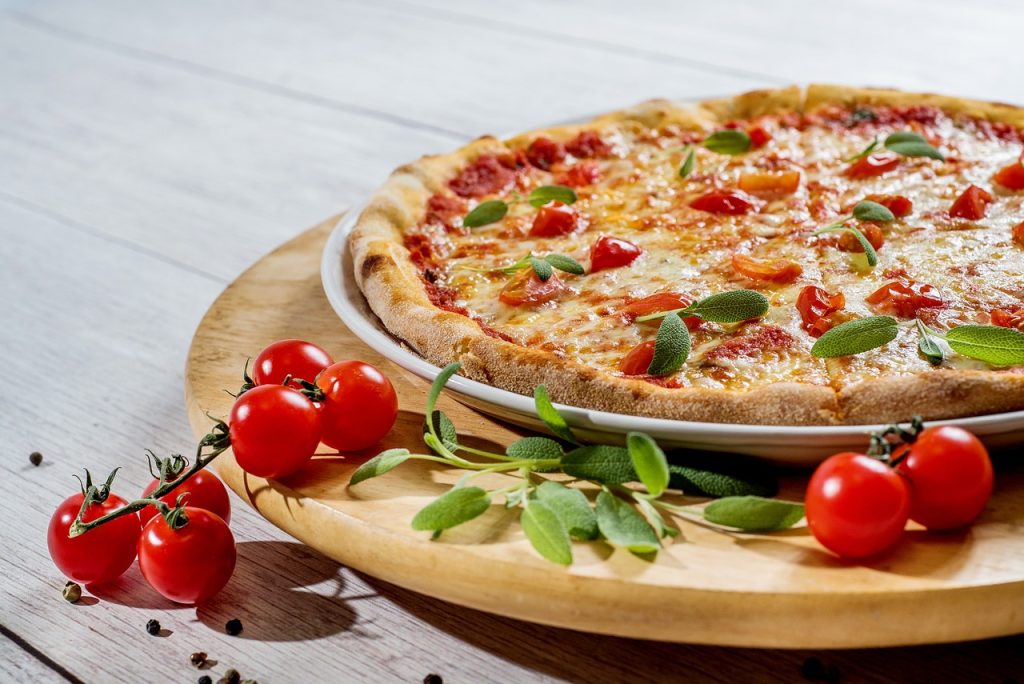Ever wonder how pizza became one of the most popular foods in the world? You’ve probably had a slice or two in your lifetime, but do you know where pizza actually comes from? Well, pull up a chair and grab a pie, because you’re about to take a whirlwind tour through the history of pizza. From its humble beginnings in Naples to its explosion in popularity in New York and eventual spread around the globe, pizza has had quite the journey. So how did we get from flatbread in Italy to a staple of American culture? The story of pizza is one of culinary innovation, mass migration, and some good old-fashioned business savvy. Ready to take a bite out of history? Then let’s get this pizza party started!The Origins of Pizza in Ancient Rome and NaplesPizza has a long and storied history that stretches back over 2,000 years. The earliest known pizza-like dish originated in Naples, Italy around 1000 AD.
These early pizzas were flatbreads with olive oil and herbs.The Origins of Pizza in Ancient Rome and NaplesAs the Roman Empire expanded, flatbreads gained popularity and different regional variants developed. In Naples, the poorer citizens and workers needed inexpensive food that was easy to eat. Flatbread fit the bill, and Naples’ proximity to Mount Vesuvius provided fertile land for growing tomatoes, a key ingredient in pizza.Around 1830, Antica Pizzeria Port’Alba opened in Naples and is still operating today. They started topping flatbread with tomatoes, cheese, and basil to create what we now know as pizza. Two other landmarks helped pizza gain popularity:King Ferdinand I loved pizza so much he gave his seal of approval, making it fashionable for aristocrats.Immigrants later brought pizza to America, especially New York City, introducing it to new audiences.New York-style pizza became popular in the early 1900s. It has a thin, foldable crust and is usually cut into slices. Chicago deep dish pizza, with its thick crust and chunky sauce, emerged in 1943. New variations continue to develop as pizza gains mainstream popularity in countries around the world.From its humble beginnings as street food for peasants, pizza has been on an extraordinary journey and become a global phenomenon. No matter the style or topping, pizza brings people joy and connects us through a shared love of simple pleasures.
Pretty impressive for such a modest Mediterranean flatbread.Pizza Arrives in America: The Rise of Pizza in New York CityPizza exploded onto the American food scene in the early 1900s, and New York City led the charge. Italian immigrants brought their recipes for pizza from Naples to New York, where the combination of diverse cultures and boundless ambition resulted in the city becoming America’s pizza epicenter.In 1905, Lombardi’s opened as the first pizzeria in the U.S., serving up classic Neapolitan-style pizza in Little Italy. The restaurant imported ingredients from Italy to make the pies that reminded immigrants of home. Word of Lombardi’s delicious pizza spread, popularizing the dish across the city.Pizza by the sliceIn the 1950s and 60s, pizza by the slice became popular in NYC. Pizzerias could now sell single slices, making pizza more affordable and accessible. You could grab a quick bite of pizza for lunch without committing to a whole pie. Slice joints popped up all over the city, especially in Manhattan.New styles emergeNew Yorkers also started putting their own spin on pizza. Innovations like extra cheese, pepperoni, and sausage helped popularize meat-based pizzas. Bagel pizza, white pizza, and grandma pizza offered alternatives to the classic Neapolitan style. Regional specialties like Buffalo chicken pizza incorporated local cuisine.Thanks to ambitious New Yorkers and waves of immigrants, pizza became an American favorite and New York cemented its status as the country’s pizza capital.
New York-style pizza is now imitated around the world, but nothing beats an authentic New York slice.Regional Pizza Styles Emerge Across the United StatesAs pizza spread from Naples to the United States, Italian immigrants adapted the dish to appeal to American tastes. Regional styles emerged, using local ingredients and catering to regional preferences.New York StyleOriginating in New York City, New York-style pizza is known for its thin crust and foldable slices.The crust is hand-tossed, resulting in an irregular shape, and topped with tomato sauce and mozzarella cheese. Popular toppings include pepperoni, mushrooms, and extra cheese. New Yorkers eat it by the slice, folded in half lengthwise.Chicago Deep DishChicago deep dish pizza has a thick, deep crust and chunky tomato sauce. Lots of cheese and a variety of meats like pepperoni, sausage, and beef make it a hearty, filling meal. Some versions are almost like a casserole. Deep dish takes longer to cook and is usually eaten with a knife and fork instead of folded like a New York slice.California StyleCalifornia-style pizza emphasizes fresh, local, and organic ingredients. Whole wheat or gluten-free crusts are common, topped with creative, nontraditional ingredients like chicken, Thai chilies, goat cheese, and sun-dried tomatoes. Cal-Mex pizzas often use ingredients like beans, salsa and avocado. The Pizza Bravissima, for example, includes sun-dried tomatoes, basil pesto, eggplant, zucchini and roasted red peppers. Health-conscious Californians demand high quality, natural ingredients.Other Regional StylesDetroit-style pizza has a thick, chewy crust and is cut into small squares. St. Louis-style pizza is ultra-thin crust, cut into squares or rectangles instead of wedges. Trenton tomato pie from New Jersey has a thick, crunchy crust, chunky tomato sauce, and mozzarella cheese. Quad City-style pizza from Iowa and Illinois uses a malty,
not-too-sweet crust and a spicy tomato sauce seasoned with fennel seeds. The variety of regional pizza styles in the U.S. reflects the country’s cultural diversity.The Pizza Boom: Fast Food Chains and Frozen PizzaThe rise of fast food chains and frozen pizzas led to an explosion of pizza popularity starting in the 1950s. Pizza was no longer just an Italian or East Coast food—it became a mainstream part of the American diet.Fast Food ChainsNational pizza chains like Pizza Hut, Domino’s, and Little Caesars made pizza accessible to all. They allowed customers to get hot, fresh pizza without having to roll their own dough or make their own sauce. All you had to do was call in an order for pickup or delivery and you’d have a steaming hot pie in minutes.These chains also introduced innovative recipes to appeal to American tastes. In addition to traditional styles, they created crowd-pleasers like the Pizza Hut Priazzo, Domino’s Brooklyn Style Pizza, and Little Caesars Crazy Bread. They made pizza a fun, social food using catchy jingles and promotions. Pizza chains were an instrumental part of popularizing pizza from a niche ethnic food into a mainstream cultural icon.Frozen PizzaAround the same time, frozen pizzas also hit supermarket shelves, providing an easy at-home alternative. Brands like Totino’s, Tombstone, and Red Baron allowed you to keep pizzas on hand for a quick, hassle-free meal any night of the week.
While not quite as tasty as a fresh-baked pizza, frozen pizzas filled the need for convenience.Kids and families in particular loved the novelty of being able to customize their own frozen pizzas at home with their favorite toppings. Frozen pizza brands also introduced a variety of recipes from basic cheese and pepperoni to Mexican-style and barbecue chicken to appeal to changing tastes.The fast food and frozen pizza boom, along with the popularity of pizza in movies, TV, and music, helped propel pizza into its status as one of America’s most beloved foods. Pizza had well and truly arrived on the mainstream stage.The Global Spread of Pizza: From Japan to BrazilPizza spread around the world like wildfire. As Italian immigrants settled in new places, they brought their cuisine with them, adapting recipes to suit local tastes. Pizza found its way onto every continent, evolving into hundreds of varieties.JapanIn Japan, pizza has been popular since the post-WWII U.S. occupation. The Japanese adapted pizza by adding local flavors like squid, mayonnaise, and seaweed. They even created their own style: okonomiyaki pizza, topped with ingredients like egg, cabbage, and pork. Strange as some toppings may seem to Westerners, pizza’s customizability is part of its global appeal.BrazilBrazil’s pizza is also a fusion of influences. Mass Italian immigration in the late 1800s brought pizza to São Paulo, which has the world’s largest population of Italian descendants outside Italy. Brazillian pizza incorporates local flavors like corn, banana, chocolate, and dulce de leche.
While purists may scoff, Brazilians love their creative pizzas.IndiaPizza arrived in India in the 1980s and found an eager market. Indians adapted pizza using local spices, vegetables like paneer cheese, and sauces like chili garlic and tikka masala. “Indian-style” pizzas reflect the country’s diversity, available in many regional variations like Jain pizza (without onion or garlic) and Navratan pizza (with nine gems like cashews, raisins and potatoes).Pizza’s spread demonstrates how cultural influences shape one another in our globalized world. What began as a flatbread in Naples, pizza has been adapted to suit countless regional tastes. Yet at its core, pizza retains its welcoming simplicity. Wherever there are friends, family, or strangers breaking bread together, pizza will continue finding a home.ConclusionThat’s the amazing story of how pizza spread from Naples to become one of the world’s most popular foods. You’ve seen how a simple dish of flatbread with sauce and cheese has been adapted in so many ways. Whether you prefer a foldable New York slice, a deep dish Chicago pie, or an authentic Neapolitan pizza with a blistered crust, pizza speaks to all of us. The next time you bite into a slice fresh out of the oven, appreciate how far that humble food has traveled to make it to your plate. Pizza truly is an international phenomenon that brings people all over the globe together through a shared love of simple pleasures and good taste.





